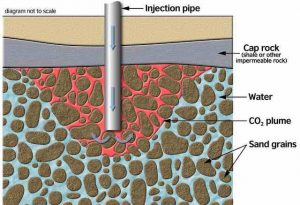
Changes to the rate of wastewater injection in disposal wells may have contributed to conditions that led to last year’s Pawnee earthquake in Oklahoma, according to a new report published May 3 as part of a focus section in Seismological Research Letters.
The magnitude 5.8 Pawnee quake, felt widely across Oklahoma, is the largest earthquake recorded in the state since the 1950s. Most Oklahoma earthquakes since 2009 are thought to have been triggered by wastewater produced by oil and gas drilling that has been injected back into the ground. The Pawnee earthquake occurred in a region with active wastewater disposal wells, and is potentially the largest such induced earthquake to have occurred in Oklahoma so far, write University of Oklahoma seismologists Xiaowei Chen and Norimitsu Nakata in their preface to the section.
When Andrew Barbour of the U.S. Geological Survey and colleagues examined new injection data from nearby disposal wells in Osage County, they found a significant increase in injection rates in the years leading up to the Pawnee mainshock. Some wells injected wastewater at a constant rate, while others injected the water at a variable rate. The overall injected volume was roughly the same between these two types of wells.
Barbour and colleagues’ models of injection indicate, however, that it may have been the variable-rate wells that were most important for the Pawnee event. Their findings suggest that “long-term injection may have been responsible for a gradual loading of the fault to the point where it primed the fault for failure triggered by the short-term high-rate injection…” the authors write. They note that in the absence of these variable rate injections, however, the fault may have still failed at a much later time.
Note: The above post is reprinted from materials provided by Seismological Society of America.










